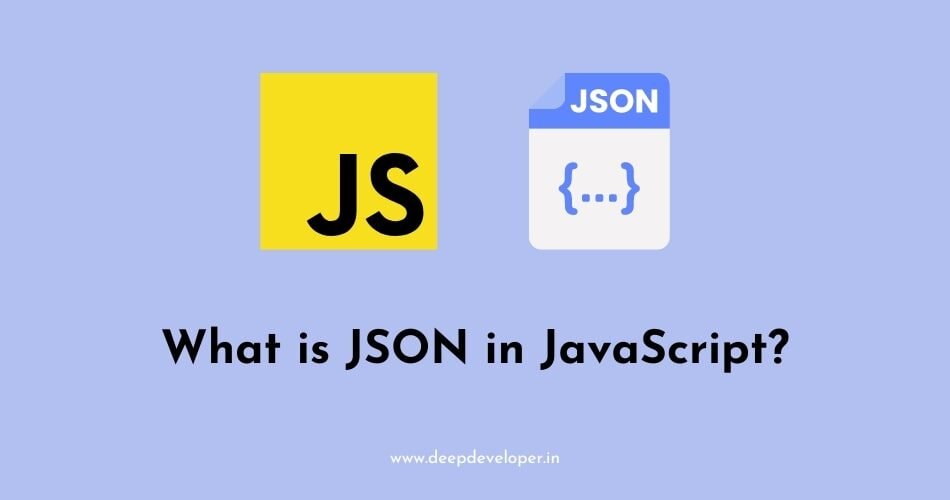JSON (JavaScript Object Notation) is a lightweight data-interchange format that is easy for humans to read and write and easy for machines to parse and generate. It is based on a subset of the JavaScript Programming Language, Standard ECMA-262 3rd Edition – December 1999. JSON is a text format that is completely language-independent but uses conventions that are familiar to programmers of the C-family of languages, including C, C++, C#, Java, JavaScript, Perl, Python, and many others. These properties make JSON an ideal data-interchange language.
Features of JSON
Some key features of JSON include:
- It is lightweight and easy to read and write, making it a great choice for data interchange and storage.
- It is based on a subset of JavaScript, which means that it is easy to integrate with web-based applications and systems.
- It uses a simple, easy-to-understand syntax that is similar to JavaScript objects, making it easy to work with for developers familiar with JavaScript.
- It is language-independent, which means that it can be used with a wide range of programming languages and platforms.
- JSON data is represented as key-value pairs, which allows for easy access and manipulation of individual data elements.
- JSON supports simple data types such as strings, numbers, and Boolean values, as well as complex data structures like arrays and objects.
- JSON is often used in combination with ajax, RESTful web services, and APIs for data transfer and storage.
JSON Data Types
JSON data can be of several types, including:
- Number: a numeric value, such as 42 or 3.14
- String: a sequence of characters, enclosed in double quotes, such as “hello” or “goodbye”
- Boolean: either true or false
- Array: an ordered collection of values, enclosed in square brackets and separated by commas, such as [“apple”, “banana”, “cherry”]
- Object: an unordered collection of key-value pairs, enclosed in curly braces and separated by commas, such as {“name”: “John”, “age”: 30, “city”: “New York”}
- Null: a special value that represents the absence of a value or object.
These are the core types in JSON and are based on the same types in JavaScript. JSON also supports more complex types such as date and binary data, but they are not part of the JSON specification and are not widely supported.
Types of JSON Structures
There are two main types of JSON structures: JSON objects and JSON arrays.
JSON Objects: A JSON object is an unordered set of key-value pairs, enclosed in curly braces. The key is a string, and the value can be any valid JSON data type, including another JSON object or JSON array. For example:
{
"name": "John Smith",
"age": 30,
"address": {
"street": "123 Main St",
"city": "New York",
"state": "NY"
},
"phoneNumbers": [
{
"type": "home",
"number": "555-555-5555"
},
{
"type": "work",
"number": "555-555-5556"
}
]
}JSON Arrays: A JSON array is an ordered collection of values, enclosed in square brackets. The values can be any valid JSON data type, including another JSON object or JSON array. For example:
[
"apple",
"banana",
"cherry",
{
"name": "John",
"age": 30
},
[
"item1",
"item2",
"item3"
]
]It’s important to note that JSON objects and arrays can be nested, meaning that an object or array can contain other objects or arrays as values, allowing for complex and hierarchical data structures.
Also Read:
- What Is a Web Worker In JavaScript?
- How To Sort an Array of Strings In JavaScript?
- ECMAScript vs JavaScript
- What Is Strict Mode In JavaScript?
- Arrow Functions In JavaScript
- Difference Between Node.js and AngularJS With Example
- Difference Between == And === In JavaScript
- How To Go Back To Previous Page In JavaScript?
- How To Detect A Mobile Device With JavaScript?
- How To Close The Current Tab In A Browser Window Using JavaScript?
- How To Convert Input Text To Uppercase While Typing Using JavaScript?
- How To Show A Confirmation Message Before Delete In JavaScript?
- How To Detect Browser or Tab Closing In JavaScript?
- How To Get Hash Value From URL Using JavaScript?
- How To Get The Name, Size, And Type Of A File In JavaScript?
- Run JavaScript From The Command Line

